
We continued our way through the Namib desert and reached the Tropic of Capricorn, where during the winter solstice the tropic matches with the sun on one line and is the southernmost location where the sun can be directly overhead on the 21st of Dec at noon and it marks the beginning of summer in the Southern Hemisphere and winter in the Northern Hemisphere.


But before we got there, we stopped on the top of a beautiful pass through the desert, called Spreetshoogte Pass which is one of the steepest passes and was built by a farmer with the help of a truck and manual labour, however, one day the truck slipped and almost fell down the cliff. People, however, stopped and managed to pull the truck back and save the driver. Since then there has been a tradition for drivers to stop at the top and enjoy the view and have a drink, so that was a surprise Kennedy had for us – he gave us a shot cup each and we said cheers and drank together while he was telling us the story! Super cool experience!
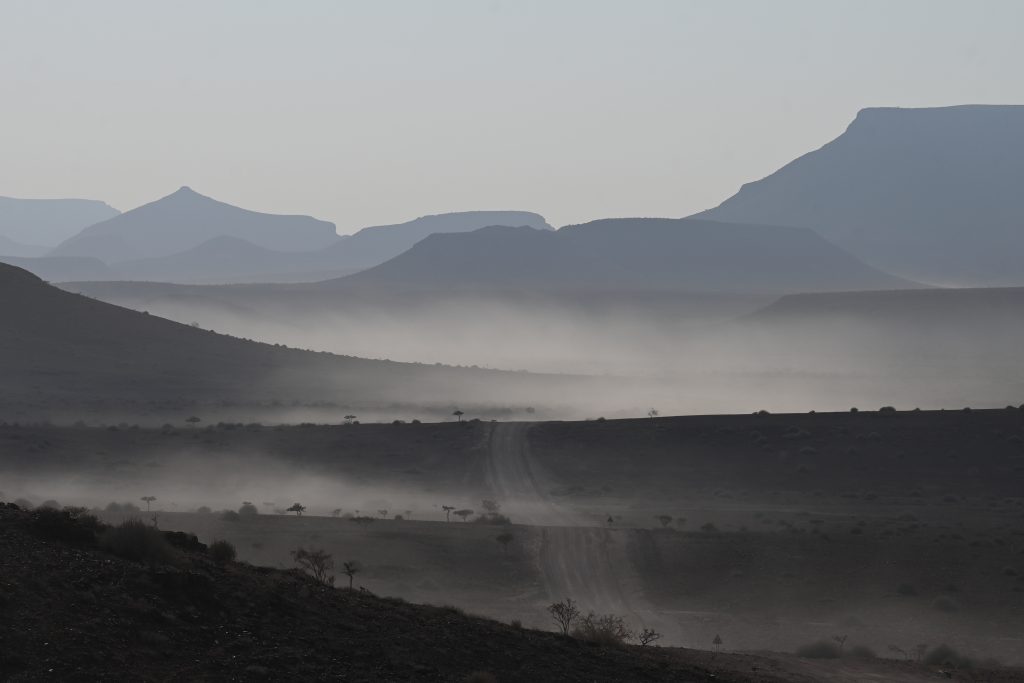
The destination we were going to on that day, was actually the highlight of the trip, besides the Etosha National Park, this is the second best-known place for everyone who’s ever heard of Namibia and for sure everyone has seen photos of it – Deadvlei, the valley of the dead trees at the bottom of the highest red sand dune – the Big Daddy dune.

On our way there we crossed the Kuiseb River pass where two German geologists escaped from Germany during WWII and came to Namibia to hide there and lived for 2 years in complete isolation, hiding in the Namib desert and hunting game to survive, they wrote a book about their adventures which, of course, all of us had to buy as soon as Kennedy told us the story, they do sell the book around the gas stations in Namibia, it’s called “The Sheltering Desert”. It is very insightful and informative on the harsh conditions in the desert, the difficulties of finding water, building shelter, finding food, and studying the region. I’d recommend everyone to read it should you be interested in the true story of these two survivors of the harsh desert reality of Namibia.
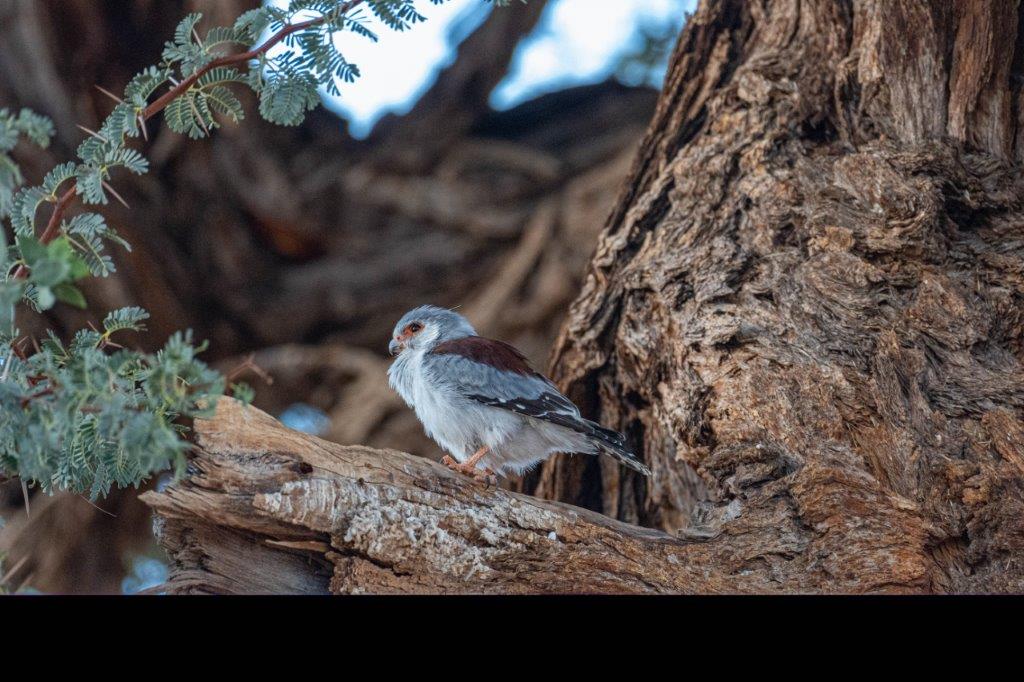
So we eventually arrived at our camp the night before we went to the dunes. We got some time to go and check out the sunset so they drove us slightly out of camp and told us to climb the dune, also as a warm-up for the next day 😀 and to see the sunset there. What happened was that the dune was literally endless and with no point of view of the sun at all, we climbed and climbed and at some point after “just one more turn”, we decided to just sit down and enjoy the sunset.. from the shady side 😀 Only Maite went all the way to the end and I am not sure whether she reached a sunny spot at all, i think she did, but after 1h of walk or so and she barely saw the sun.
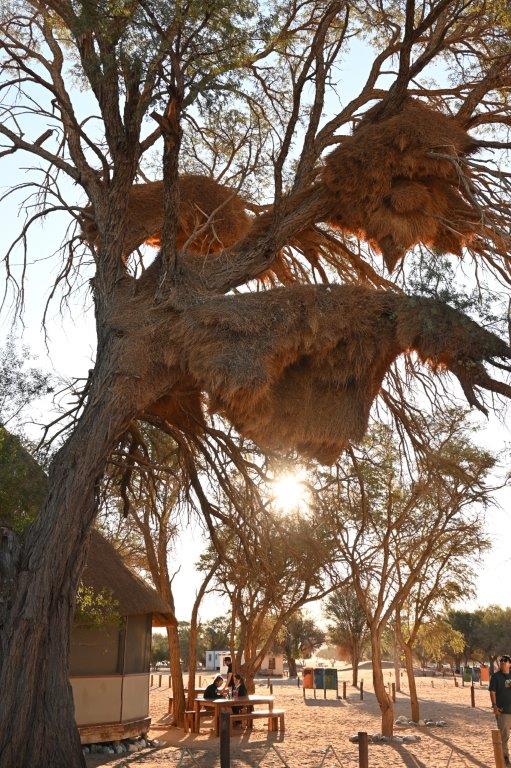
But on the way up to the dunes, there was a tree with sociable weavers birds nest which I was so excited about and had already spent a few evenings and mornings around previous camps observing – they are small birds from the finch family and build nests with sometimes more than a hundred (100!) individual chambers for each pair of birds where they nest and raise chicks. The nest looks like a giant honeycomb if you ask me, or more like a huge haystack on a tree. But what caught my attention was something slightly larger than the weavers flying around, i had read that there is a pygmy falcon living around and preying on the weavers but I hadn’t seen one and when I got closer – OH MY GOD! There it was – the pygmy falcon! It was SOOOO CUUUUTE, hard to handle such cuteness, the falcontje (yeah, adding the Dutch “tje” to make a word sound “small” and “cute”, like biertje, huisje etc). So the falcontje was around 10-15cm big, super cute but yeah.. it went right into one of the weaver’s nest chambers and I waited but it didn’t come out. I snapped a few photos though. The poor birdies (weavers) were all on the nearby tree sounding the alarm, poor things 🙁
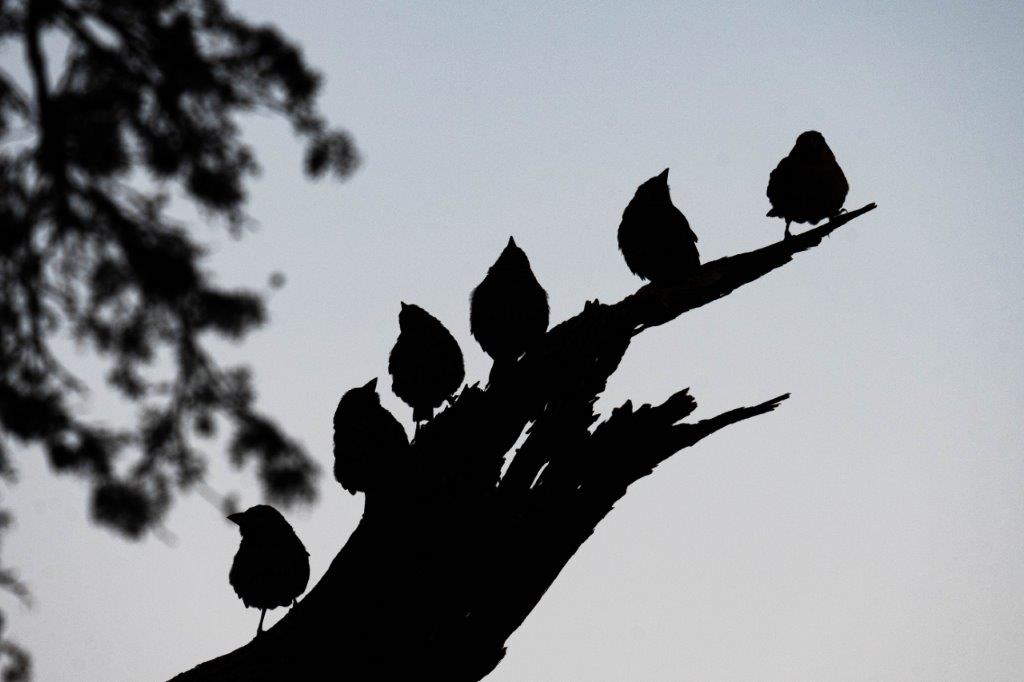
But this is the reason why they have so many nests so that at least some of the chicks survive the pygmy falcon’s attack on their eggs and chicks. On the way back there was a big group of people around the tree and I thought they’d seen the falcon so when I went to ask them, they said they were just looking at the weavers, didn’t see the falcon and they said that they really wanted to see the falcon so when I told them that it was there literally 30min ago they asked to see my photos and were quite envious. Oh well 😀
Since Erastus has spent the past few years bringing tourists around this area, he was the expert and the next day was his moment to shine when he would lead and talk us through everything about the area and Kennedy would stay behind to rest and then cook the dinner. We’d start very early in the morning, around 4 AM to go on Dune 45 for the sunrise and to have enough time to climb it in the dark before the sunrise comes up. Then, we’d head towards Big Daddy where we would have 2 options to hike the dune – just the first part from which you see the Dead valley but without going all the way up to the dune’s top, or actually climb to the top of Big Daddy at 325m height which would take about an hour-hour and a half to climb. Climbing dunes is actually quite energy-consuming, you take one step forward, two steps back.. so it takes a lot of time and a lot of effort. From both the lower part and the top of Big Daddy, you could go down into the valley.
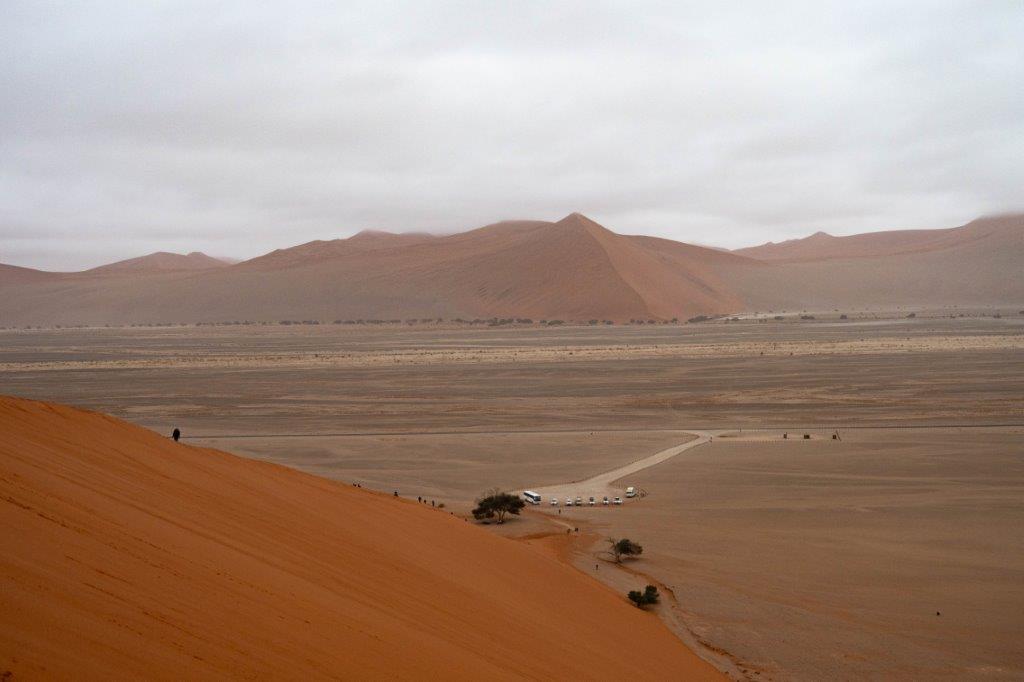
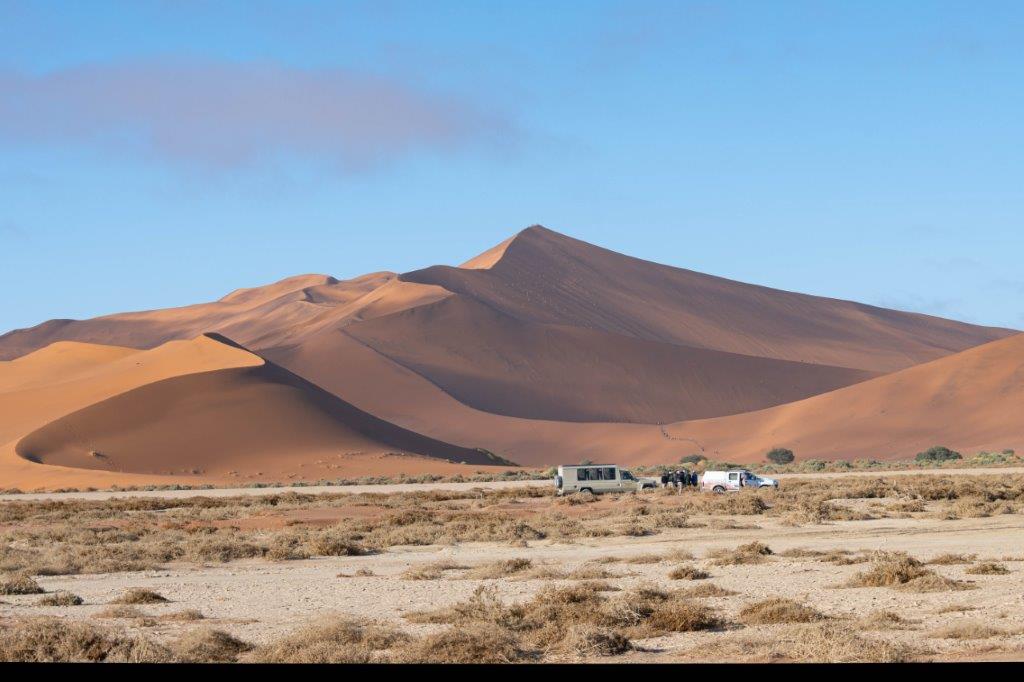

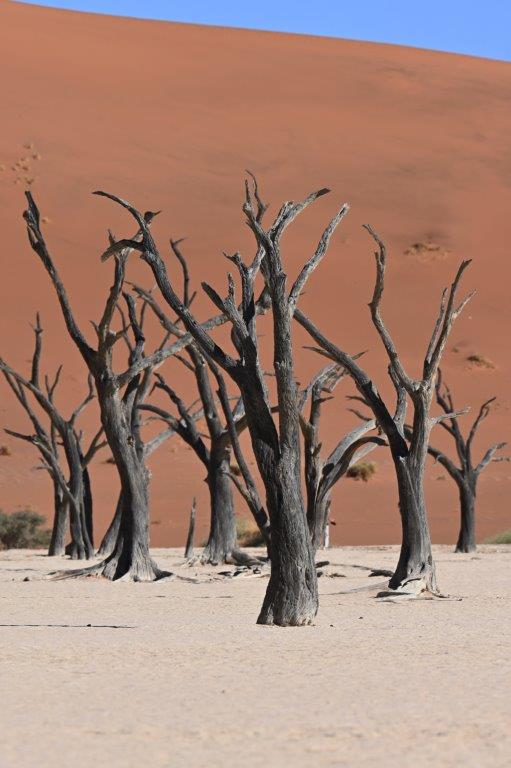

Walking up Dune 45 was a bit easier than Big Daddy because it was early in the morning and the sand was wet from the mist during the night and thus, still a bit harder and easier to walk on, the view from top was absolutely stunning. Then, on the Big Daddy dune we only climbed the side part and I wanted to get a video of how I ran downwards, but we didn’t have enough time to climb to the top, otherwise I’d totally do that. So I got my video running down and oh my gosh! The sand was soooo freezing, I had taken my shoes off and my feet froze, I started dreaming just to reach the bottom and put the shoes on, but the bottom didn’t seem to get any closer haha, eventually I got down and saw that Erastus was also filming me and my tired and tormented by the cold face changed to a smile for the video hahaha 😀
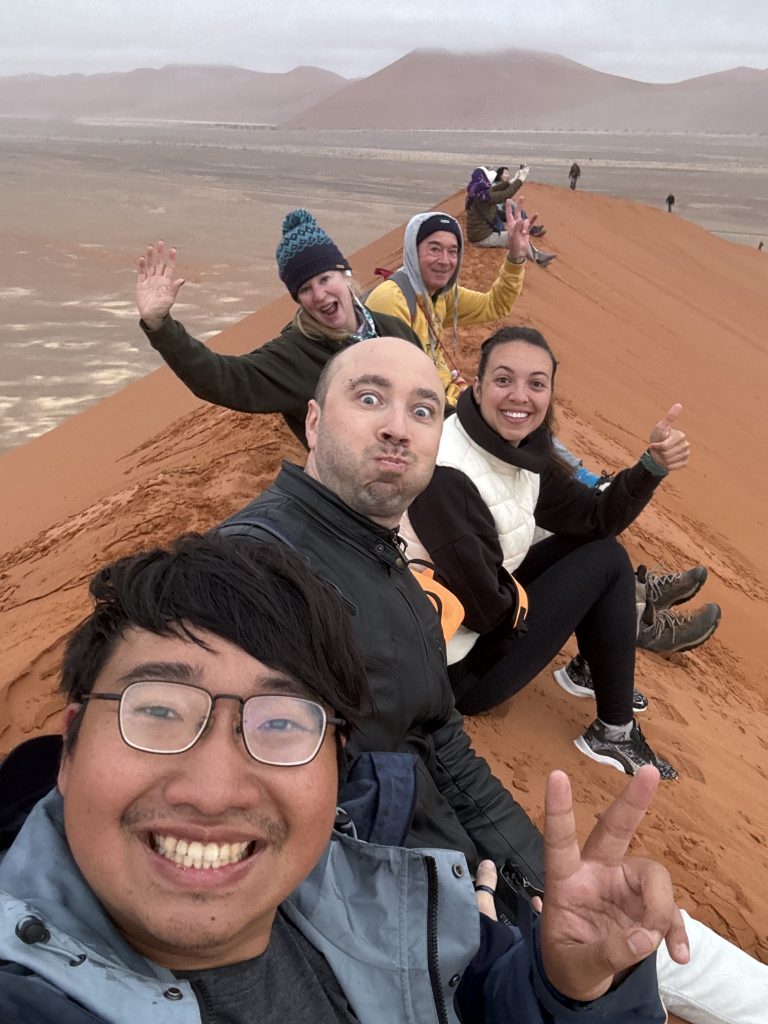
So then I spent some time talking to Erastus and what he told me about the sands is that back in the days the Orange river used to pass there, including where Deadvlei is, and it used to bring the red sands from the Kalahari desert all the way down to the ocean after which the currents and winds brought the sand back and formed the dunes, however at some point the river moved further down and then completely disappeared. The contrast with the white sand is where the bottom of the water/lakes was. So trees lived there but when the water was no longer passing there, all these trees died. There are some acacia trees still alive further in the distance, and that is because they have very deep roots and can still reach and store some scarce water whenever it rains in the country.

